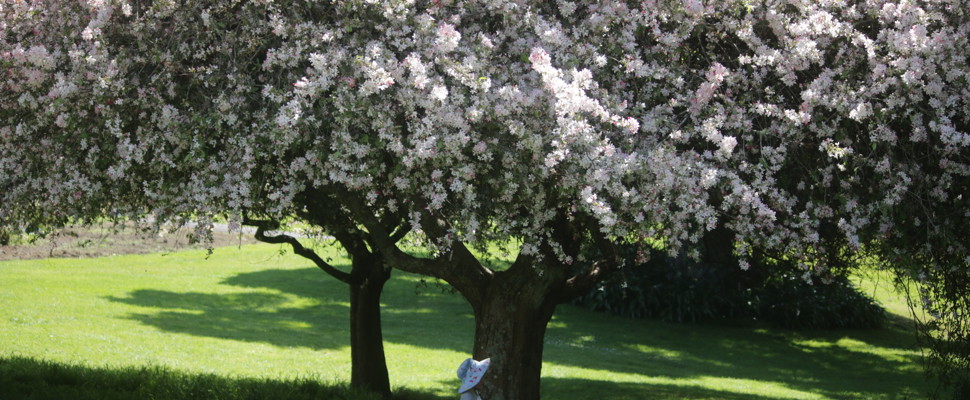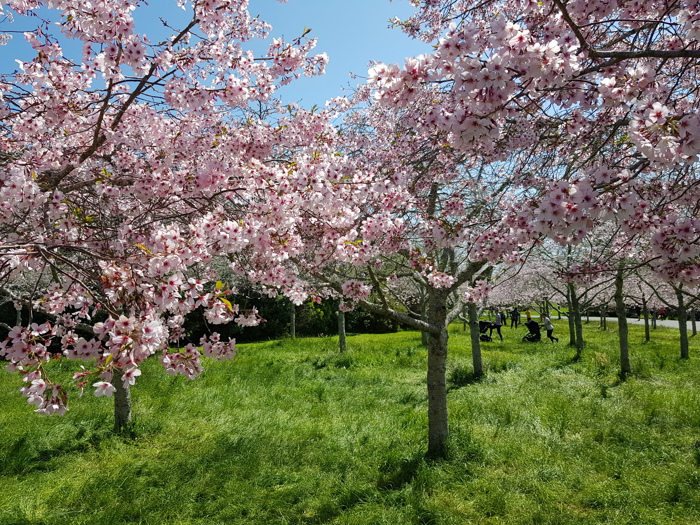
Why We Have to Remove Trees
A process of careful consideration
Sometimes we have to remove trees from the Auckland Botanic Gardens. Trees are long-lived, large, and often spectacular, so they are only removed when it is necessary.
Reasons for tree removal include:
- Age
- Pest and disease infection
- Storm damage
- Climate stresses
- Inclusion on the Regional Pest Management Plan
- Unsuitability for Auckland's conditions
Mere Brewer, the Botanic Garden's team leader of plant collections, explains that a careful process is followed before a tree is removed, and a tree’s health is monitored for several years before a decision is made.
A recent example was the removal of three 43-year-old Malus x floribunda (Crabapples) from the lawn between the cherry blossom grove and the Camellia Garden due to their declining health, which had been noticed and monitored over the last five years.
“The trees were full of lichen, not producing blossoms as they once did, and were affected by Silver Leaf. Our arborists noted that the trees had collar rot and were soft, which may have contributed to their declining health. It seems the trees then contracted a secondary infection through weakened structures.”

Malus x floribunda in healthier times. The trees got diseased and were removed in April 2024.
For every tree that is removed, we aim to replace it with the same species or another species better suited to Auckland's conditions.
Climate change and increasing weather extremes also stress some of our trees. We have been carefully monitoring the health of our ‘Awanui’ cherries for any signs of stress due to recent oscillations between years of extreme rainfall and drought. A few of the older trees, showing serious signs of deterioration, have been removed. They will be replaced as part of the upcoming autumn planting plan to ensure the spring blossom continues to be a major seasonal highlight, and the grove retains its longevity and integrity.

The 'Awanui' cherry grove in 2021.
In 2022, we had to remove several trees from across the site after they were listed on the updated Regional Pest Management Plan, including Taiwanese cherries, whose nectar-dripping flowers were an absolute favourite of tūī (see image below).

Tūī feeding on the abundant nectar of Prunus campanulata 'Felix Jury' before the trees were removed after being placed on the Regional Pest Management Plan
To ensure the health and longevity of our trees, they are regularly inspected by expert arborists, and diseased or damaged branches are removed early. Regular monitoring of our trees occurs every few months.
It is always sad to have to remove trees, which is why we only do so when necessary.